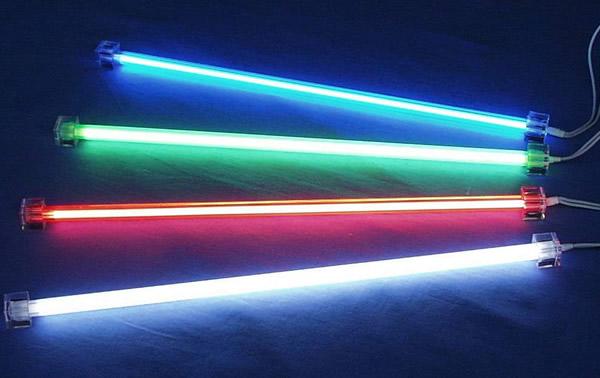1. Definition of Lumen
The so-called lumens refers to the total emitted luminous flux produced by a candle in a solid angle. cd, Candela, unit of luminous intensity, equivalent to the luminous intensity of an ordinary candle. The solid angle refers to the angle represented by the spherical cone corresponding to a spherical crown of 1 square meter on a unit sphere of radius 1. It corresponds to the central angle of the mid-section of about 65°.
Considering that the solid angle of the entire sphere is 4π, the total luminous flux emitted by 1 candle at 1 meter around it is 4π (about 12.57) lumens. The total luminous flux emitted by 1 candle at about 0.28m around it is 1 lumen. The luminous flux of a candle at 1 solid angle is 1 lumen, and the total solid angle of a ball of any size is 4π, so the total luminous flux of a candle is fixed at 4π, which does not change with distance.
Therefore, “the total luminous flux emitted by 1 candle at a position of about 0.28m around it is 1 lumen” is a false statement. In the same way, the next sentence is wrong – the usual statement is that the light effect of a candle at a position of 1 foot (0.305m) is 1 lumen.
Lumens for common light sources
An ordinary 40-watt incandescent light bulb has a luminous efficiency of about 10 lumens per watt. So it can emit 400 lumens of light.. A 40-watt incandescent lamp has a luminous flux of 340 lumens at 220 volts.
Luminous flux is the ability to describe the strength of the visual response generated by the radiation of the light source per unit time. The unit is lumens, also called brightness.
Projectors express luminous flux in ANSI lumens. ANSI Lumens is a standard for measuring the luminous flux of projectors developed by the American National Standards Institute. It measures the illuminance of each point on the nine intersections of the screen “田” shape, multiplies the area, and then finds the average of the nine points, which is the ANSI lumens of the projector.
The higher the lumen value, the brighter, the higher the brightness, so there is no need to turn on the light when projecting. ANSI is an acronym for American National Standards Institute.
2. Detailed Introduction
Similarly, this quantity is for the light source, which describes the total amount of light emitted by the light source, which is equivalent to the optical power. The greater the luminous flux of a light source, the more light the light source emits.
Isotropic light, that is, the light of the light source, is emitted with the same density in all directions. For isotropic light, then F = 4πI. That is to say, if the I of the light source is 1cd, the total luminous flux is 4π = 12.56 lm. To make the irradiated point look brighter, we must not only increase the luminous flux, but also increase the means of convergence. In fact, it is to reduce the area, so as to get more strength.
You must know that the luminous flux is also an artificial amount, which may be different for other animals. It is not completely natural, because this definition is completely based on the response of the human eye to light.
The human eye perceives light of different colors differently, and this perception determines the conversion relationship between luminous flux and optical power.
Lumen value of different color light
The human eye is most sensitive to 555nm yellow-green light, 1W = 683 lm. That is to say, 1W of power is all converted into light with a wavelength of 555nm. This is 683 lumens. This is the maximum light conversion efficiency and is also the calibration value, because the human eye is most sensitive to 555nm light.
For other colors of light, such as red at 650nm, 1W of light is only equivalent to 73 lumens. This is because the human eye is not sensitive to red light. For white light, it depends. Because many different spectral structures of light are white. For example, the white light of an LED, the white light of a TV. And sunlight are very different because of the different spectrums.
As for the luminous efficiency of electric light sources, it is another related topic. It means how much luminous flux can be converted into 1W electric power. If all converted to 555nm light, that’s 683 lumens per watt. But if half is converted into 555nm light and the other half is lost as heat, the efficiency is 341.5 lumens per watt.
Incandescent lamps can reach 1W = 20 lm is very good, the rest is heat or infrared. Measuring the luminous flux of an irregular luminous body requires integration, which is more professional and complicated.
3. Luminous Efficiency (lm/W)
Incandescent lamps: 15
White LED: 80-200
Fluorescent light: 50
Sunlight: 94
Sodium Lamp: 120
Energy-saving lamps: 60-80
LED: 80-130
definition
In 1967, the 13th International Conference on Weights and Measures in France stipulated that candela, candela/square meter, lumens, and lux be used as the units of luminous intensity, luminous brightness, luminous flux and illuminance, respectively. It is important to unify the optical measurement units used in engineering technology. In order to make it easier for you to understand and use, the following will give a brief introduction to the relevant knowledge:
(1) Candela, International Candle, Candela
At a standard atmospheric pressure of 101325 Newtons per square meter, an absolute “black body” with an area equal to 1/60 square centimeter (that is, an ideal object capable of absorbing all external light without reflection), at the solidification temperature of pure platinum (Pt) (about 2042K or 1769°C), the luminous intensity along the vertical direction is 1 candela. Moreover, the three concepts of candlelight, international candlelight and candela are different and should not be equivalent. Quantitatively, 60 candela is equal to 58.8 international candela. And 1 candela of a Huffner lamp is equal to 0.885 international candela or 0.919 candela.
(2) Luminous intensity and brightness
Luminous intensity is abbreviated as luminous intensity, and the international unit is candela, abbreviated as cd. A point light source with a luminous intensity of 1cd emits a luminous flux of 1lm within a unit solid angle (1 steradian).
When the light source radiation is uniform, the light intensity is I=F/Ω. Ω is the solid angle in steradian (sr). F is the luminous flux, the unit is lumens. For a point light source, I=F/4π .
Brightness is the brightness of the light-emitting surface. Refers to the ratio of the luminous intensity of the luminous surface in the specified direction to the area of the luminous surface perpendicular to the specified direction. The unit is candela/square meter.
For a diffuse scattering surface, although the light intensity and luminous flux in each direction are different, the brightness in each direction is equal. The fluorescent screen of the TV is similar to such a diffuse scattering surface. So the images are viewed from all directions and have the same sense of brightness.
The following are the brightness values of some light sources (in cd/m2):
Sun: 15000,
Fluorescent light: 1200,
Moonlight (full moon): 1000,
Black and white TV screen: about 120,
Color TV screen: 80 or so.
(3) Luminous flux and lumens
The light energy emitted by the light source is radiated in all directions. For the light energy passing through a certain area in unit time, it is called the radiant energy flux through this area.
The frequency of each color light is different, and the sensitivity of the human eye to each color light is also different. Even if the radiant energy flux of each color light is equal, it does not produce the same brightness visually.
Among the various colors of light, yellow and green light can arouse the greatest bright feeling. If the green light is used as the level, and its luminous flux is equal to the radiant energy flux, then for other color lights, the ability to arouse a bright feeling is smaller than that of the green light. And the luminous flux is also smaller than the radiant energy flux.
The unit of luminous flux is lumens, abbreviated as lm. At the solidification temperature of platinum, the luminous flux radiated from an area of 5.305*103cm2 for an absolute blackbody is 1lm. To illustrate the relationship between luminous intensity and luminous flux, a point light source with a luminous intensity of 1 candela emits 1 lumen of luminous flux per unit solid angle (1 steradian). The luminous flux output of a 40W fluorescent lamp is about 2100 lumens.
(4) Illuminance and Lux
Illuminance can be measured directly with an illuminometer. The unit of illuminance is lux, which can also be written as lx. An object that is uniformly illuminated by light has an illuminance of 1 lux when the luminous flux obtained on an area of 1 square meter is 1 lumen. Sometimes in order to make full use of the light source, a reflector is often attached to the light source, so that more luminous flux can be obtained in certain directions. So as to increase the illumination on the illuminated surface. Such as car headlights, flashlights, camera lights, etc.
4. Illuminance Value (Unit Lux)
Night: 0.001—0.02,
Moonlit Night: 0.02—0.3,
Cloudy indoor: 5-50,
Cloudy outdoor: 50-500,
Indoor on sunny days: 100-1000,
Illuminance under the sunlight at noon in summer: about 109 power,
Illumination required for reading books and periodicals: 500-600,
Home camera standard illumination: 1400.



